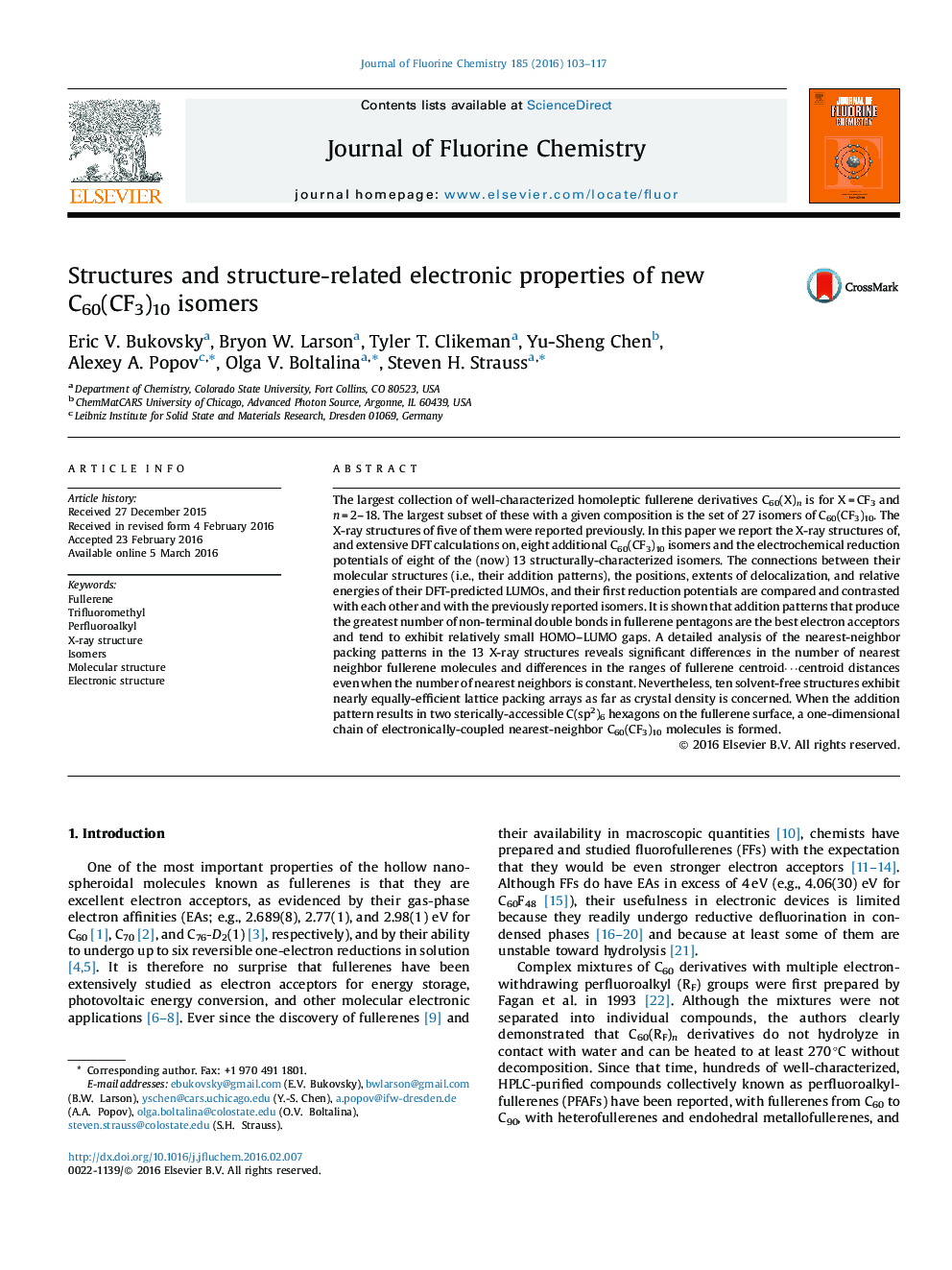| کد مقاله | کد نشریه | سال انتشار | مقاله انگلیسی | نسخه تمام متن |
|---|---|---|---|---|
| 1313480 | 1499315 | 2016 | 15 صفحه PDF | دانلود رایگان |

• Addition patterns of eight isomers of C60(CF3)10 are confirmed by X-ray crystallography.
• The CF3 groups are arranged in the para or meta positions on fullerene hexagons.
• Reduction potentials for the isomers vary by 0.53 V, a record for fullerene derivative isomers.
• DFT calculations show that the LUMOs are directly connected to the placement of double bonds in fullerene pentagons.
The largest collection of well-characterized homoleptic fullerene derivatives C60(X)n is for X = CF3 and n = 2–18. The largest subset of these with a given composition is the set of 27 isomers of C60(CF3)10. The X-ray structures of five of them were reported previously. In this paper we report the X-ray structures of, and extensive DFT calculations on, eight additional C60(CF3)10 isomers and the electrochemical reduction potentials of eight of the (now) 13 structurally-characterized isomers. The connections between their molecular structures (i.e., their addition patterns), the positions, extents of delocalization, and relative energies of their DFT-predicted LUMOs, and their first reduction potentials are compared and contrasted with each other and with the previously reported isomers. It is shown that addition patterns that produce the greatest number of non-terminal double bonds in fullerene pentagons are the best electron acceptors and tend to exhibit relatively small HOMO–LUMO gaps. A detailed analysis of the nearest-neighbor packing patterns in the 13 X-ray structures reveals significant differences in the number of nearest neighbor fullerene molecules and differences in the ranges of fullerene centroid⋯centroid distances even when the number of nearest neighbors is constant. Nevertheless, ten solvent-free structures exhibit nearly equally-efficient lattice packing arrays as far as crystal density is concerned. When the addition pattern results in two sterically-accessible C(sp2)6 hexagons on the fullerene surface, a one-dimensional chain of electronically-coupled nearest-neighbor C60(CF3)10 molecules is formed.
Molecular and electronic structures of 13 isomers of C60(CF3)10 are analyzed, including eight new X-ray structures.Figure optionsDownload as PowerPoint slide
Journal: Journal of Fluorine Chemistry - Volume 185, May 2016, Pages 103–117